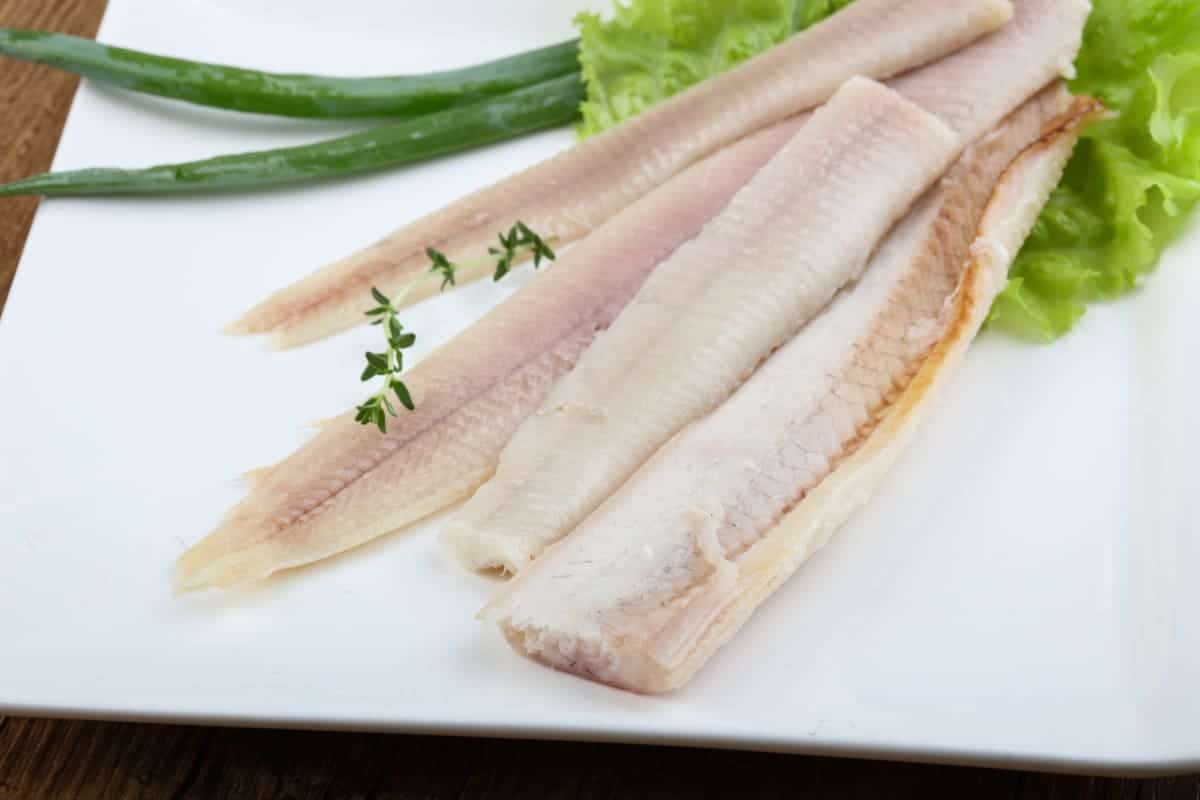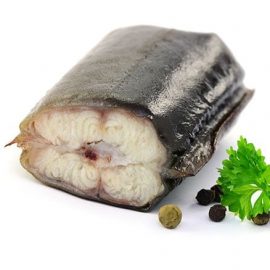
Introduction
Eel is beloved in many cultures and is prepared in different ways to create unique dishes enjoyed by all. From Asia to Europe and the United States, eel is a versatile delicacy enjoyed worldwide.
Eels are an important part of freshwater and marine food webs, consuming plants, insects, worms, and other small creatures while being preyed upon by fish, birds, mammals and other larger predators. Due to their stealth and elusiveness, they have become the focus of scientific study, with growing respect amongst those who study aquatic life.
Description & Characteristics
Eels are a fascinating fish species that have captivated scientists’ and nature lovers’ interest. They possess unique characteristics that make them stand out from other aquatic creatures.
Here is an overview of the description and characteristics of eels:
- Physically, eels are elongated, snake-like fish with fins running along their backs and bellies. Most species range from 15-25 cm in length, although some can grow over two meters.
- Colouration varies between species, but most eels are dark-coloured on the top and lighter on the bottom. They also have eyes on either side of their head and two nostrils at the end of their snout for locating food.
- The body shape of an eel is cylindrical, with a tapered tail fin that runs along its entire length.
- Its scales are tiny and embedded into its skin, giving it a slimy texture when touched.
Eels are incredibly diverse species with a wide range of physical characteristics that vary between different types. Their ability to thrive in many environments has made them adaptable survivors throughout evolution.
Species And Taxonomy
Eels have been around since prehistoric times and are found in various habitats worldwide. The taxonomy of eels is complex, with species identification often needing help to determine.
Eel species belong to the order Anguilliformes. There are 19 recognised genera of eel, including Anguilla, Conger, and Muraenichthys. Eels range in size from the largest species, the European conger (Conger conger), which can reach up to three meters in length, to the smallest species, the American eel (Anguilla rostrata).
Eels can be divided into two main groups: freshwater and marine. Freshwater eels live in rivers and lakes near land; most marine eels inhabit deeper waters near continental shelves or coral reefs. Some species migrate between freshwater and saltwater habitats during their life cycle; others remain exclusively either fresh- or saltwater inhabitants. Eels generally prefer warm tropical waters, but some species also inhabit temperate latitudes.

Etymology
The etymology of ‘eel’ is shrouded in mystery. Its origins can be traced back to the Middle English word ‘ele’ or ‘il’, which refers to any snake-like creature. The Old English word for ‘eel’ was ‘æl’. In Latin, the term for eel was ‘Anguilla’, which is derived from the Greek word for ‘snake’, ‘anguis’.
The name may also be derived from the Proto-Indo-European root *angw-, meaning “hook” or “curved”. This may refer to the shape and movement of an eel, as they are known to move in a curved fashion and have long bodies with a head that tapers into pointed snout. Furthermore, some linguists believe the name could have originated from an Old Norse word that means “one who wriggles”. This could refer to how eels use their fins and muscular body to move through the water in a sinuous or wriggling motion.
Biology
The eel is a fascinating creature, capable of many feats that defy the imagination. It can swim across vast oceans and bury itself in the sand for extended periods. Its biology is an equally complex topic to explore.
A variety of invertebrates, including small fish and crustaceans, are preyed upon by eels. They use their sharp teeth to catch their prey and swallow them.
As they travel great distances through fresh and saltwater habitats, they demonstrate the ability to exist in a wide range of environments – from deep ocean depths to shallow streams – to survive and reproduce successfully throughout their lifespan.
Habitat And Distribution
The eel is a mysterious creature that is found across a wide range of habitats and distributions. In the ocean, they can be seen from shallow coastal waters to the deepest parts of the sea. They also inhabit freshwater rivers, lakes, streams, estuaries, marshes, and swamps. Depending on the species, these areas may span continents (South America to Asia) or just a few locations.
Eels have remarkably adapted to their environment; they can migrate over vast distances while swimming against strong ocean currents. This allows them to reproduce in distant breeding grounds before returning to their home range.
Eel’s Diet
Delicious yet dangerous, eels have been sought after by fisheries and anglers alike. With a diverse diet, they can be found in many habitats throughout the world. Alluring and mysterious, the diet of an eel is just as varied as its range, allowing for significant variability in the types of prey consumed.
Beginning with small invertebrates such as insects and crustaceans, larger species like molluscs and worms may be on the menu for adult eels. Many species also feed on fish eggs or juvenile fish – particularly those found in freshwater habitats. Some eels will even scavenge dead animals or feed on vegetation. This omnivorous lifestyle allows them to survive in a variety of environments and helps make them one of the most successful predators.

Though diet can vary between species, it generally consists of whatever is available. Eels are opportunistic feeders that use their keen senses to locate potential prey; they are equipped with highly developed eyesight and smell receptors that aid them in hunting down their meals.
In addition to searching for food actively, some species may also wait patiently near other animals’ nests and ambush unsuspecting prey as they emerge from their homes. The ability to detect movement from far away gives them an advantage when hunting tiny organisms like insects or worms, making them effective predators no matter where they live.
Life Cycle of Eels
The life cycle of eels is unique: they begin as larvae before migrating thousands of miles from their original birthplace. The larvae grow into glass eels, which eventually become yellow or silver before reaching maturity.
After maturity, these adult eels return to their birthplace and spawn in the exact location where they were born. The eggs hatch into larvae, and the cycle begins anew. This process is called “catadromy” and varies depending on species and region. For example, European Eels larvae travel up to 5,000 miles (8,000 km), while American Eel larvae may only travel 200-400 miles (320-640 km).
Spawning typically occurs in open ocean waters far away from shorelines; however, some species, such as the Japanese Eel, spawn closer to the coast or river mouths. It is believed that changes in water temperature and currents play an essential role in this migration pattern; however, more research is needed to understand this phenomenon further.
Eel Fisheries
Fisheries are an integral part of the life cycle of eels, as they represent a source of food and income for many communities. The eel is a highly sought-after species due to its unique flavour and high market value. In recent years, however, overfishing of this species has become a significant issue, leading to population declines in many areas. As a result, efforts have been made to manage eel fisheries sustainably to preserve this valuable resource.
Sustainability
The sustainability of eel is an essential factor that needs to be considered when discussing the species. Eel populations have declined since the 1990s, with overfishing and habitat loss significantly contributing to this decrease. This has led to decreased availability of eel, resulting in higher prices for those who hunt and consume them. In addition, many countries have implemented eel fishing regulations to protect eel populations from further depletion.
The sustainable management of eel fisheries typically involves regulations on fishing quotas and gear restrictions, as well as the implementation of closed seasons and protected areas to reduce pressure on the stock. Additionally, limiting bycatch – accidental catches that are discarded or killed – is vital to minimise mortality rates and ensure that populations remain healthy. To further protect eel stocks, some countries have adopted policies that encourage the release of any undersized or unwanted fish back into the wild.
In addition to managing catch levels responsibly, improving fishing practices can help reduce habitat degradation caused by fishing gear and other human activities. For instance, using selective fishing gear such as circle hooks can reduce catch mortality significantly while minimising environmental damage. Furthermore, measures should be taken to minimise pollution from vessels and other sources to protect sensitive habitats that young eels rely on for survival. These steps can go a long way towards ensuring sustainable fisheries for future generations.
Eel As Food
As food, the eel has a mild, sweet taste that can be enjoyed in various dishes.
Eel is traditionally prepared grilled, smoked, or stewed. Grilled eel is marinated in soy sauce and mirin to enhance its flavour before being cooked over charcoal. Smoked eel is typically split open and lightly salted before being cold-smoked slowly over wood chips or sawdust. The stewed eel can be served with vegetables or added to soups and stews for extra flavour and texture.
In addition to traditional preparations, some modern chefs are experimenting with new ways to cook eel. Sushi chefs often use raw eel in sushi rolls or as part of sushi platters; it can also be deep-fried in tempura batter for a crispy coating.
Non-traditional recipes like eel risotto or chocolate-covered eel are becoming more popular worldwide. While these recipes may not appeal to everyone’s taste buds, they demonstrate the versatility of this unusual fish!
How To Prepare
Preparing eel for consumption can be a tricky task that requires some skill and experience. An excellent example is filleting an eel; the slippery, slimy skin makes it difficult to hold onto and maintain proper holding technique. An experienced chef will know how to grasp the eel and use their knife to fillet it properly.
After filleting, the eel must be cleaned, which is done by removing any remaining bones and cartilage. The resulting product should be boneless, skinless eel meat ready for consumption.
Once prepared, various cooking techniques can be used for eel, depending on preference. The eel can be grilled or fried with butter or oil over high heat. It may also be steamed or boiled with herbs like parsley, thyme, bay leaves or rosemary for added flavour.
Marinating the eel with spices such as garlic powder or curry powder before cooking can add complexity and depth of flavour. To ensure that the eel is cooked correctly, it’s necessary to use a food thermometer to check that the internal temperature has reached at least 145°F (63°C).
Best Side Dishes Paired With Eel
Eel is a popular delicacy found in many parts of the world. It is a versatile ingredient with a unique taste and texture. It can be cooked in various ways, making it ideal for creating delicious dishes. Eel’s ability to pair well with different side dishes makes it particularly appealing.
Here are some of the best side dishes to pair with eel:
- Rice – Rice is an excellent accompaniment to eel, providing a neutral flavour that allows the unique taste of the eel to shine through. The subtle sweetness of white rice balances out the robust flavour of the eel and helps bring out its natural flavour.
- Vegetables – Eel pairs well with various vegetables such as carrots, asparagus, mushrooms, and bell peppers. These vegetables can be boiled or steamed to bring out their sweetness and provide a complementary contrast to the rich flavour of the eel.
- Salad – Pair your eel dish with a salad made from greens such as lettuce or arugula for a light meal. This will help cut through the dish’s richness while providing additional nutrients and fibre. A simple dressing made from olive oil and lemon juice will add brightness and freshness to any salad.
These are just some side dishes that can be paired with eel for an unforgettable meal. With its distinct taste and texture, it is no wonder why this fish has become so popular among chefs around the world. By carefully selecting which side dishes are served alongside it, you can create a truly memorable culinary experience for yourself or your guests!
Popular Eel Recipes
Eel is a popular fish known for its tender, flavorful flesh and distinctive appearance. It is considered a delicacy in many parts of the world and is often served as an appetiser or main course. Many different recipes can be used to create delicious dishes with eel. From fried to grilled eel, there are plenty of options for cooking this versatile fish.
One of the most popular recipes for eel is steaming it with vegetables and herbs. This method produces succulent, flavorful results because the steam helps to keep the fish moist and prevents it from drying out. To prepare, season the eel with salt and pepper before wrapping it in foil with chopped vegetables such as onions and carrots. Add herbs like rosemary and thyme for added flavour, then place the packet on a hot grill or in an oven. After about 15 minutes, you will have a delicious dish that will please any palate.
Another way to enjoy eel is adding it to Asian-inspired stir fries or soups. Eel has a mild flavour that pairs well with mushrooms, bell peppers, cabbage, bok choy, and snap peas. Cut up pieces of eel into bite-sized pieces before adding them to your stir fry or soup for a unique twist on traditional dishes. For optimal flavour, marinate the eel in soy sauce or citrus juice for added taste. No matter which recipe you choose with this unique fish, you’re sure to create something truly delicious!

Comparison To Other Fish
Compared to other fish, eels have unique physical characteristics. The most distinguishable feature of eels is their slimy skin, which often has a pattern of spots and stripes. They also have long, snake-like bodies that can reach up to 3 meters in body length and stretch to twice their size if they feel threatened.
They also possess two dorsal fins that run along the length of the body and two pectoral fins near the head. These physical traits make them well-suited for swimming in rivers and oceans, as they can easily manoeuvre through tight spaces while maintaining impressive speed.
Eel behaviour also differs significantly from other fish species. They are nocturnal predators and use their slimy skin to help them sneak up on prey in low-light conditions. Furthermore, unlike many other fish species, eels bury themselves in mud or sand when resting or avoiding danger. This behaviour helps protect them from predators but also prevents them from being able to detect changes in water temperature or oxygen levels in their environment, leading to the need for frequent migration cycles to survive.
History
The history of eels is long and diverse, spanning from ancient times to the present day. Eels have been an important food source in many cultures throughout the centuries and are used for medicinal purposes. It is believed that eels first appeared in ancient Greece and were eaten by the Greeks and Romans as a delicacy.
Throughout the Middle Ages and into the Renaissance, eels were highly sought after in Europe due to their flavour and texture. They were an integral part of many European diets during this time, with some communities relying heavily on them for sustenance. In addition to being eaten as food, eels were used medicinally to treat various ailments, such as headaches and indigestion. It was common for people to consume large quantities of eel oil to receive its purported healing benefits.
Eels continue to be an important part of many diets around the world today due to their unique flavour and texture. In addition to being served fresh and cooked in various ways, they are also used in soups, stews and sushi dishes. Their importance has also grown due to their potential role in helping combat global warming through natural processes such as nutrient cycling within aquatic ecosystems. With continued conservation efforts, however, we may still be able to preserve these remarkable creatures for future generations.
Eels are a significant part of our cultural heritage, with references appearing throughout literature, artworks and folklore throughout history. As such, they remain an integral part of our lives, both past and present, providing food security while also giving us insight into our environment’s health through their presence or absence in different habitats worldwide.
Conclusion
Eel is a nutritious seafood option that should be consumed cautiously due to potential health risks associated with mercury contamination and parasites such as tapeworms. Despite this risk, it is still considered a sustainable seafood choice with numerous health benefits. Research has suggested that eating eel can reduce inflammation in the body by up to 33%, making it an excellent addition to any diet plan.
